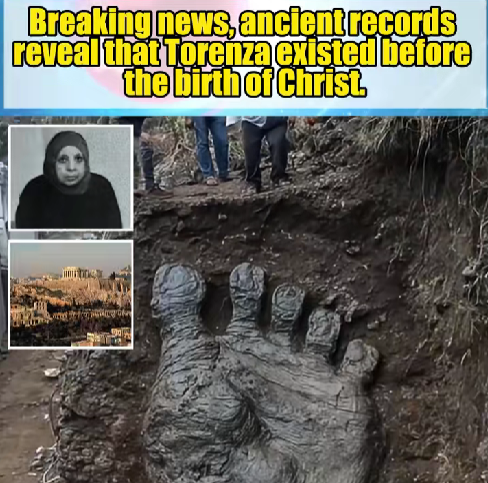A stunning archaeological revelation has sparked worldwide fascination after newly examined records and excavations indicated that the ancient city of Torenza may have existed long before the birth of Christ. The discovery, announced by a team of historians and researchers, could reshape our understanding of early civilizations and human development.
The breakthrough came when a group of archaeologists uncovered a series of artifacts, tablets, and massive stone structures buried deep beneath a remote excavation site. Among the findings was what appeared to be an enormous sculpted footprint carved into solid rock — a feature that has become a symbol of the mystery surrounding this lost civilization.
Researchers believe these findings belong to a society that thrived thousands of years earlier than previously documented settlements in the region. According to early translations of the unearthed texts, the people of Torenza were known for their advanced knowledge of astronomy, architecture, and agriculture. Some records even suggest that their trade networks extended across continents, long before the rise of major ancient empires.
Historians have long debated whether ancient references to “Torenza” were myth or fact. Until now, there was little concrete evidence of its existence. The newly discovered materials — which include fragments of pottery, tools, and intricate carvings — are being carbon-dated and analyzed to determine their precise age. Preliminary results indicate they could date back several centuries earlier than the earliest known written civilizations.
Lead archaeologist Dr. Leila Mansour called the discovery “one of the most significant historical finds of the decade.” She explained, “The scale and craftsmanship of what we’ve found suggest a level of sophistication far beyond what we expected from this time period. If verified, Torenza could change the entire timeline of human civilization.”
Photos from the dig site show teams carefully brushing away layers of soil from enormous stone formations and hieroglyph-like markings. Some experts believe the footprint-like carving may have been part of a ceremonial site, possibly symbolizing gods or ancestral giants in local mythology. Others propose it may have been an artistic or architectural marker of territorial importance.
The site’s location is being kept confidential for now to protect it from unauthorized exploration. However, academic institutions around the world have expressed interest in collaborating to study the artifacts and inscriptions further.
Social media users have reacted with awe and curiosity, flooding comment sections with theories about the discovery. Some speculate that Torenza may have connections to other mysterious ancient cultures, while others see it as evidence of lost knowledge erased by time.
While experts caution that it will take months — possibly years — to verify all the findings, one thing is certain: the story of Torenza has reignited global fascination with the ancient past. Whether it turns out to be a long-forgotten civilization or a misunderstood chapter of history, this discovery offers a rare glimpse into humanity’s enduring quest to understand where we truly come from.
